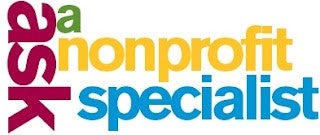Research and recommendations for effective, day-to-day nonprofit practice from ASU faculty, staff, students, and the nonprofit and philanthropic community.

Welcome to Research Friday! As part of a continuing series,we invite a nonprofit scholar, student, or professional to highlight current research reports or studies and discuss how they can inform and improve day-to-day nonprofit practice.
Nonprofit Finance Fund’s (NFF) 2013 State of the Sector survey explored a variety of financial and management challenges facing organizations across the country. The core story, as told by nearly 6,000 respondents, is of a fragile balancing act between rising community need and shrinking or stagnant resources for social programs. Particularly in the last several years, in the wake of the financial crisis, organizations have struggled with a variety of challenges related to government support.
In the United States, we rely on government to provide key economic supports. We expect the federal, state, and local governments to play a role in educating our children, helping communities rebuild after natural disasters, and improving our collective quality of life. To…
Read more
Question: We provide our services free to our program participants, but we are feeling the strain of limited resources. Some have suggested we charge a fee for our services, but I am reluctant to go down this road. What should we consider about charging fees for our services? Will we be required to pay taxes on fees collected?
The traditional charity model is based on the expectation that organizations raise funds from institutions and individuals in order to provide services to those in need, primarily free of charge. Charitable giving continues to flourish in this country; according to the Giving USA report, charitable giving totaled $298 billion in 2011,with 73% of funds donated by individuals. Americans continue to be very generous, but unfortunately, the demand for services outstrips our ability to fund services with charitable gifts alone.
Diversify funding sources
At the ASU Lodestar Center for Philanthropy and Nonprofit Innovation, we…
Read moreIn 2012, 25 percent of Americans had more credit card debt than they had in their emergency savings. With consumer spending fueling 70% of our nation’s economic growth, the need to consume commercial products has forever been a staple in American culture. As a society, we are constantly being bombarded with advertisements, all pulling us to spend money. With so much pressure to spend, how are we supposed to fight the debt that is overwhelming our country?
The answer lies in education. For the past six months I have worked with YWCA Maricopa County, expanding its Own It Financial Education program, which provides low-income women and families a free education teaching them how to become financially stable and independent. It has been amazing to see the impact financial literacy can have on a person, and just how crucial financial literacy is on the future of our young people.
One of the first classes I organized at the YW was for a group of young teenage mothers. These girls had found themselves alone, with no money, and now responsible for the care a young child, all by the age of 16. In other words, they were just trying to make it through the day. Throughout the class, we covered topics like budgeting, the differences between…
Read moreWhat most people do not realize is that nonprofit organizations experience similar complications and obstacles that a businesses face. Whether it is a small group or a large nonprofit corporation, the struggle to get the marketing message out there for the public to respond to is a battle that is fought every step of the way. If you are involved in this ongoing struggle with your nonprofit organization, we have eight tools that can help your organization get its marketing message across loud and clear.
1. Decompress the marketing budget with WordPress
In addition to the everyday headaches of marketing your message to the public, nonprofits often also struggle with a much lower marketing allowance than the for-profit competition. Nonprofit organizations can use WordPress, an easy to use application, for blogging and websites, making telling your riveting story and engaging your supporter’s interest easier and with far less expense.
WordPress allows you to compete in a visually stunning and attractive online format. You can be extremely search engine friendly without putting limitations on video, audio, or depth of social media reach. WordPress should definitely be at the top of every nonprofit toolbox.
2. Luminate Online lightens your fundraising load (By tons)
…
Read moreI recently completed a nonprofit internship, and it was a very difficult and challenging experience. My internship took place at Fairbanks Youth Advocates in Fairbanks, Alaska. I was in Alaska for the summer as an AmeriCorps Summer Crew Leader. After a successful summer, I was asked to stay and help open an emergency youth shelter as the Emergency Youth Shelter Coordinator.
My first day on the job was to familiarize myself with the organization by learning about their history and development. For the next few days I became familiar with runaway and homeless youth issues. The next big challenge was researching how to open an emergency youth shelter. There weren’t many options in Alaska, so I had to expand my search. I looked up shelters all over the U.S. and Canada. I looked to many of my nonprofit leadership and management classes at ASU for insight.
This gave me the tools to develop the steps to get the program going. We named it the Emergency Youth Shelter / Safe Space. The next step was to look for a location. We worked on finding sites, and then mailed out 15 letters. The letters explained our mission and what we were looking for. A few days went by, and then we got a response. It was from a church…
Read more